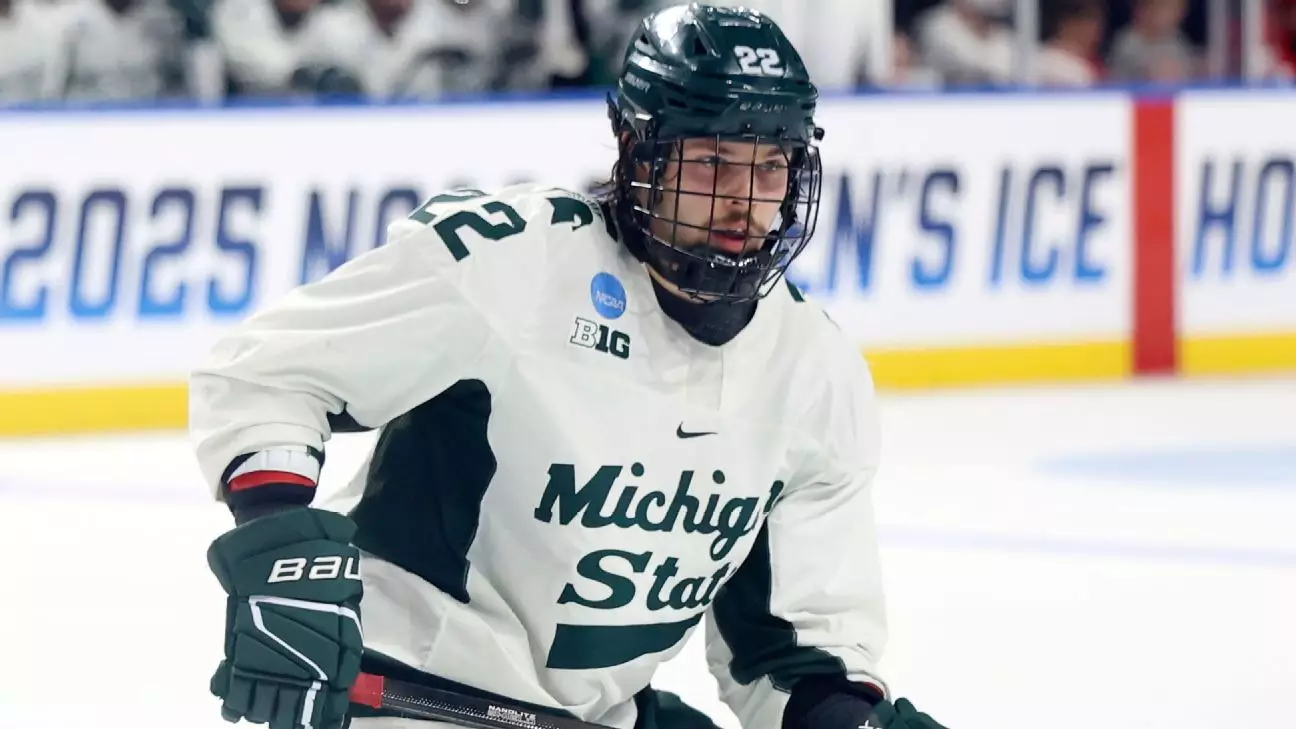In the modern NHL, where teams continuously seek the right mix of youth and experience, the recent trade of Isaac Howard from Tampa Bay to Edmonton represents a calculated gamble and a statement of intent. Howard, a rising star and reigning Hobey Baker award winner, embodies the raw potential and skill that every championship-contending team craves. However, the decision to move him—despite his impressive accolades—highlight a broader trend in league strategy: teams are reimagining the value of prospects in the context of current roster needs and cap management.
This trade underscores a crucial shift where organizations no longer solely rely on drafting and developing talent in-house but actively trade for talent that complements their existing core. Tampa Bay’s move to acquire Sam O’Reilly signals their tactical focus on immediate depth rather than long-term investment in high-upside prospects. Conversely, Edmonton’s gamble to sign Howard signals their aggressive push to bolster their offensive arsenal cheaply, leveraging Howard’s potential before he even steps onto NHL ice. Such moves are underpinned by an understanding that in today’s NHL, betting on the future can often outweigh the costs of holding onto prospects who are not yet proven at the highest level.
Howard’s Road: From College Ranks to NHL Prominence
Isaac Howard’s journey demonstrates the diverse pathways young hockey players take to reach the professional pinnacle. Drafted out of the esteemed U.S. National Team Development Program, Howard exemplifies the calibre of talent that the NHL’s talent pipelines aspire to nurture. His time at Minnesota Duluth, though brief, showcased his scoring prowess—posting six goals in 35 games—before transferring to Michigan State, where he became a dominant force. His junior season was a breakout, with 26 goals and 52 points in just 37 games, electrifying the college hockey landscape.
What makes Howard special isn’t solely his offensive numbers but the qualities that accompany them—speed, hockey sense, and a competitive edge. His Hobey Baker victory cemented his reputation nationally, elevating his perceived ceiling dramatically. Yet, behind these achievements lies a critical question: how soon can a player like Howard translate his talent to the pro level? While his college statistics suggest readiness, the NHL demands more than numbers—mental resilience, consistency, and adaptation are key. The Edmonton Oilers believing in his potential and securing him on an entry-level contract underscores their understanding that Howard’s development could accelerate with the right environment and coaching.
The Implications for the Oilers and the Broader NHL Landscape
Edmonton’s active pursuit of Howard signifies a broader strategic shift. The Oilers, currently thriving in a championship window with star talents like Connor McDavid and Leon Draisaitl, recognize the importance of securing young talent who can be integrated seamlessly into a playoff-caliber roster. Their willingness to invest on a team-friendly deal reflects a long-term vision—getting high-ceiling players at minimal cost, while making space for veteran leadership and established stars.
Meanwhile, Tampa Bay’s decision to move Howard highlights a different lesson: sometimes, holding on to prospects out of fear of losing them for nothing can be ill-advised in today’s market. Instead, savvy organizations are now more willing to trade high-value prospects for immediate gains, especially if they believe the player may choose college or another route for development. Howard’s case also amplifies the ongoing debate about the balance between drafting prospects and acquiring proven commodities—one that the NHL is still trying to master.
Howard’s move also hints at a larger pattern of college hockey’s increasing influence on NHL roster composition. With high-profile talents like Gavin McKenna announcing commitments to major programs like Penn State, the talent pipeline continues to evolve. The infusion of college players like Howard brings a blend of grit, education, and polish that is invaluable as the league becomes more competitive and strategic.
Isaac Howard’s transition from college stardom to NHL certainty exemplifies the ever-changing dynamics of player development and team building. His story is a reminder that in today’s NHL landscape, bold moves—based on calculated risk and future potential—are the true currency of success. Teams that recognize the value of high-ceiling prospects at a bargain and are willing to make strategic trades will likely shape the future contours of the league, defining the next era of hockey greatness.

